ASH 2018: Dr. Mato on Testing Before Treatment in chronic lymphocytic leukemia (CLL)
We have to know our enemy before we decide how to best target therapy. That is why testing before treatment…
Chronic lymphocytic leukemia (CLL) is a typically slow-growing cancer which begins in lymphocytes in the bone marrow and extends into the blood. It can also spread to lymph nodes and organs such as the liver and spleen.
CLL develops when too many abnormal lymphocytes grow, crowding out normal blood cells and making it difficult for the body to fight infection.
More resources for Chronic Lymphocytic Leukemia (CLL) from Patient Empowerment Network.
This podcast was originally published by Cornell Weill Cancer Cast, on March 22, 2019, here.
This video was originally published by Mayo Clinic Laboratories on August 6th, 2019, here.
In this month’s “Hot Topic,” Dr. Curt Hanson will discuss the use of laboratory-based prognostic markers in patients with chronic lymphocytic leukemia (CLL). He will also highlight the importance of molecular analyses for IGHV and TP53 sequencing in these patients.
How Can The CLL Society Help You? from Patient Empowerment Network on Vimeo.
Dr. Brian Koffman, co-founder of The CLL Society, explains its mission and goals. Dr. Koffman reviews programs and services that assist chronic lymphocytic leukemia (CLL) patients and their loved ones.
Dr. Brian Koffman is the cofounder, chief medical officer, and executive vice president of The CLL Society.
See More From The Pro-Active CLL Patient Toolkit
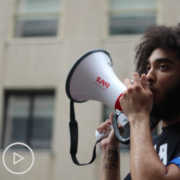
|
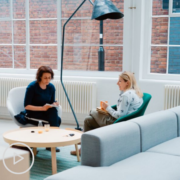
|
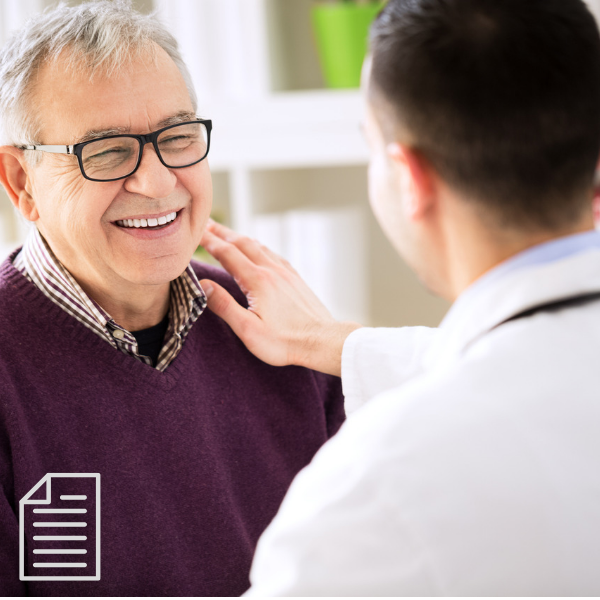
|
Dr. Koffman:
Hi, I’m Dr. Brian Koffman. I’m a retired family doctor, and I’m the cofounder, chief medical officer, and executive vice president of the CLL Society. And, what, you ask, is the CLL Society? Well, the CLL Society is a 501(c)3 not-profit that focuses on the unmet needs of the CLL community in terms of supporting, educating, advocating on behalf of, and researching what needs to be done in the CLL community.
The CLL Society is very proud of the programs that we offer. So, among the programs that we offer, the backbone is a website that covers everything from the very basic kind of information – frequently asked questions – to really the latest research that’s coming out.
Also, on the website, CLLSociety.org, we have a whole toolbox, and in that toolbox, there are lists of acronyms. There are links to other CLL resources. There are links to CLL experts around the country. There are spreadsheets to help you with your lab sheet – lab results so you can follow them and mark the trans-Excel spreadsheet. We also do trial educational forums across the country with places like MD Anderson, Dana-Farber, or the National Institutes of Health.
And, we have 30-plus support groups in Canada and the USA that meet generally on a monthly basis, so there’s a peer-to-peer interaction, and we provide education to all of those. And, one of the programs that I’m most proud of is for patients who don’t have access to an expert. We provide free virtual consultations with CLL experts from the top institutions through a Zoom-type platform that’s HIPAA-compliant so patients can ask their questions to a remote expert, that expert reviews their medical records, and then to their local hematologist so they get the benefit of a consult that they wouldn’t otherwise.
Nervous About A Second Opinion? How to Confront Your Fears. from Patient Empowerment Network on Vimeo.
Chronic lymphocytic leukemia (CLL) patients may be hesitant to ask for a second opinion to help guide their care and treatment choices. Dr. Brian Koffman shares his advice for confronting fears and becoming a confident self-advocate. Need help speaking up? Download the Find Your Voice Resource Guide here.
Dr. Brian Koffman is the cofounder, chief medical officer, and executive vice president of The CLL Society.
See More From The Pro-Active CLL Patient Toolkit

|

|

|
Dr. Koffman:
It’s a relatively rare cancer, and most hematologists and oncologists are busy taking care of the more common cancers, like breast, colon, prostate, or lung cancer.
So, they don’t really have a lot of experience compared to a CLL expert who only sees CLL patients, or more than half their practice is CLL patients, in terms of taking care of those patients. There are roughly 20,000 hematologist/oncologists in the USA, and there are roughly 20,000 new patients diagnosed with CLL a year, so if you do the math, you can figure out a community hematologist might be seeing one new CLL patient every year.
So, you wouldn’t see a surgeon who does one hernia repair a year, you’d see one who does many every week. So – and, it’s not just that these people have more experience. There’s research that shows that there’s a survival benefit to seeing a CLL expert, and people live roughly two years longer – based on some old research – by just having an expert as part of their team.
Above and beyond that, CLL is being revolutionized in how it’s being treated, and there’s all kinds of new therapy, and what the best treatment today will be upstaged by a better treatment next month, perhaps. So, unless you’re really focused on CLL, you’re not gonna be aware of what the latest data, what the latest research is, so it’s critically important because they’re on top of what the latest research is, they’re on top of what the latest clinical trials are, they’re on top of the best way to use the new medications that are available, and they provide you with significant survival advantage and management of some of the potential complications with CLL.
So, some people are concerned about getting a second opinion because they’re worried that it might portray to their doctor that they don’t have trust in their judgement or that they’re not happy with the care that they’re getting. Well, as a retired physician, let me assure you that most doctors are very thick-skinned, and we generally welcome people getting another opinion – a second opinion – and medicine is collaborative, and so, most doctors aren’t hesitant about you doing that, and welcome that. Bluntly, if you have a doctor who doesn’t want you to get a second opinion, that would be, for me, a real urgency to get a second opinion.
If hesitant or nervous about getting a second opinion, what I would encourage you to do is think hard about what – whose skin is in this game. Who is the person who has the disease? Who is the person that’s gonna benefit from getting that extra information? So, what is the worst that could happen? The worst that could happen is that you could see the expert, get an opinion that’s identical to your own physician’s, and that just inspires confidence in what’s going on.
The other thing that could happen is there might be an alternative that’s more attractive – less toxic, more effective – and wouldn’t you kick yourself if you hadn’t taken that chance and pursued getting that extra information? So, it’s – every medical decision should be a shared medical decision, and it’s all right as patients to ask for that second opinion and just…not to be hesitant about doing it.
Really, again, it’s rare that a doctor is gonna object to you doing that, and if your doctor objects, then I think you’ve gotta look at what that means, and especially in view of the data, there’s a survival advantage to getting a second opinion.
Undetectable Minimal Residual Disease (UMRD) Explained from Patient Empowerment Network on Vimeo.
Dr. Brian Koffman, co-founder of The CLL Society, defines the term undetectable minimal residual disease (UMRD) and explains its role in chronic lymphocytic leukemia (CLL) care.
Dr. Brian Koffman is the cofounder, chief medical officer, and executive vice president of The CLL Society.
See More From Your CLL Navigator

|

|

|
So, “UMRD” stands for “undetectable minimal residual disease.” So, what the heck does that mean?
What that means is that if you got it, you’re in pretty great shape because your CLL has been driven down to such a low level that it’s no longer detectable. Now, that doesn’t mean that you’re cured of the CLL, that doesn’t mean the CLL is gone, but that means your CLL is such a low level that it’s no longer detectable. The minimal residual disease is undetectable; we can’t find it with the best tests that we have.
And, that is very good news because it means your CLL is either potentially cured – and we won’t know that for several years, but there’s some evidence to suggest that some people who reach UMRD are cured of their CLL, or that the CLL’s been knocked down to such a low level, it’ll be years before it reoccurs again. So, I think UMRD is one of the hot terms that’s getting a lot of attention, and it’s one that you wanna be comfortable and familiar with.
Overwhelmed By a CLL Diagnosis? Key Steps to Take from Patient Empowerment Network on Vimeo.
CLL advocate Dr. Brian Koffman, outlines key steps to take following a chronic lymphocytic leukemia (CLL) diagnosis.
Dr. Brian Koffman is the cofounder, chief medical officer, and executive vice president of The CLL Society.
See More From The Path to CLL Empowerment

|

|

|
Dr. Koffman:
When somebody’s starting their CLL journey, there is some advice that I’d like to give people. The first is take your time. CLL rarely needs to be treated as soon as it’s diagnosed. You have time to learn about the disease, to familiarize yourself with the disease, and that learning is an iterative process.
You go over and over stuff, and eventually, this incredibly foreign language full of acronyms and medical talk becomes more familiar to you, and you feel more comfortable with it. But, it’s very overwhelming at first, but it’s not like some acute leukemias and other kinds of cancer, where they’re gonna see you on Tuesday and book the start of therapy on Friday. In CLL, that almost never happens. So, the first thing I would say is take a deep breath, under-react, and accept that you’ve got some time to make that decision.
The second strong piece of advice I would give people is to get an expert on your team. I can’t emphasize that enough. CLL is a rare cancer that the treatment paradigms have shifted radically in the last couple years, and they’re continuing to shift. And, if you’re not taking advantage of those changes – and, the research shows that in the community, patients are still too often getting inappropriate or less-than-optimum care compared to what’s happening in academic research centers.
You wanna get into their Rolodex file. You wanna be in their system so if a crisis happens three years down the line, you’re not a new patient trying to get an appointment. You have them in your system.
A third point that I’d make is to insist that you get appropriate testing before each and every treatment of your CLL. “Test before treat” is one of our mantras at the CLL Society because CLL tends to evolve over time, and not some – most, but not all of the prognostic and predictive factors can change over time, and those factors can be very influential in terms of saying, “This therapy will work, that therapy won’t work.” It’s critical that you know that, and if you knew it a year ago, it may be different now, so it’s critical to insist that your doctor do the appropriate predictive and prognostic testing.
We outline that on our website in our “test before treat” section in terms of what tests you need to have done. Take your time, get an expert, and get tested before treatment.
So, one of the questions I get asked is how can people learn more about CLL?
So, you can – some people like to learn online. CLLSociety.org has highly curated, medically reviewed articles that can help people from the beginning move forward. Leukemia and Lymphoma Society has useful resources on their website and has pamphlets that can help. Lymphoma Research Foundation is another. The Patient Empowerment Network offers you resources, listening to CLL experts and other CLL patients.
Going to support groups – you can often learn from other patients’ experiences. There’s nothing like meeting another patient and finding out what they’re like in that journey, especially if you’re two months into the journey and they’re 15-20 years into the journey. That can be incredibly helpful for you to see what their personal experience was in doing that. So, and also, there’s educational forums – for example, at the CLL Society, we have a dozen educational forums across the country every year – that give people an opportunity to learn from experts at places like the National Institutes of Health, Dana-Farber, MD Anderson, UCSD, and the Mayo Clinic.
So, we usually have one that isn’t far away from people to be able to go to if you wanna do your learning live.
This podcast was originally published by The Bloodline With LLS on January 22, 2019, here.
Join Alicia and Lizette from The Leukemia and Lymphoma Society as they speak with Dr. Ann LaCasce, Program Director of the Dana-Farber/ Partners CancerCare Fellowship, the largest hematology/oncology training program in the country. On this episode, Dr. LaCasce explains the difference between chronic lymphocytic leukemia (CLL) and small lymphocytic lymphoma (SLL), CLL and its connection with Agent Orange exposure, resources available for Veterans, current and emerging therapies, clinical trials and the importance of medication adherence. Dr. LaCasce shares her excitement for what is to come for CLL treatment and her appreciation for fellow providers around the world, who work to move science forward as they continue to learn from each other.
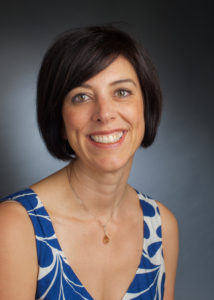 Ann LaCasce, MD
Ann LaCasce, MD
This podcast was originally published by CancerCare on June 20, 2019, here.
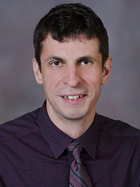
Alexey V. Danilov, MD, PhD
Associate Professor of Medicine, Knight Cancer Institute, Oregon Health & Science University (OHSU)
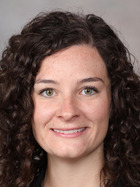
Lindsey E. Roeker, MD
Hematology/Medical Oncology Fellow, Department of Medicine, Memorial Sloan Kettering Cancer Center
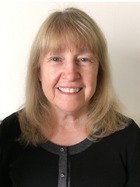
Patricia Koffman
Co-Founder and Executive Director, CLL Society Inc.
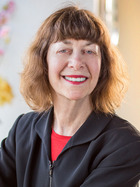
Carolyn Messner, DSW, OSW-C, FAPOS, FAOSW
Director of Education and Training, CancerCare
This podcast was originally on The Bloodline With LLS on December 17, 2018, here.
 Ann LaCasce, MD
Ann LaCasce, MD
Listen in as Alicia and Lizette chat with Dr. Ann LaCasce, a Program Director of the Dana-Farber/ Partners CancerCare Fellowship, the largest hematology/oncology training program in the country. While studying pre-med, Dr. LaCasce took additional classes that piqued her interest in art history. After managing an art gallery in New York for five years and returning to medical school, she found that being visually oriented allowed her to approach hematology with creativity while caring for her patients. Join in as Dr. LaCasce discusses diagnosis and treatment of chronic lymphocytic leukemia (CLL), small cell lymphocytic lymphoma (SLL), the importance of patients feeling comfortable with their healthcare team and why she prefers the term ‘active surveillance’ over ‘watch and wait’ when monitoring a patient’s disease.
Podcast: Play in new window | Download
Fact or Fiction? CLL Treatment & Side Effects from Patient Empowerment Network on Vimeo.
Are you confused about chronic lymphocytic leukemia (CLL) treatment information? Dr. Javier Pinilla-Ibarz from Moffitt Cancer Center reviews current CLL treatments, emerging research and common side effects to help you decipher fact from fiction.
Dr. Javier Pinilla-Ibarz is Lymphoma Section Head and Director of Immunotherapy in the Malignant Hematology Department at H.Lee Moffitt Cancer Center & Research Institute. Learn more about Dr. Pinilla-Ibarz here.
View The Fact or Fiction? CLL Treatment & Side Effects Resource Guide

|
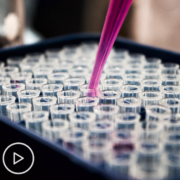
|

|
Patricia Murphy:
Welcome to Fact or Fiction: CLL Treatment and side effects. First, let’s thank our partner, the Leukemia and Lymphoma Society. Today, we’ll debunk common misconceptions about CLL treatment and side effects. That’s chronic lymphocytic leukemia. I’m Patricia Murphy, your host for today’s program. Joining me is Dr. Javier Pinilla. Thank you, Dr. Pinilla, for joining us. Tell us a little bit about yourself.
Dr. Javier Pinilla:
How are you doing, Patricia? So, I am a hematology oncologist. I’m the head of the lymphoma program at the H. Lee Moffitt Cancer Center. In my practice, in my clinic, I see mostly, almost 80%, 90% of patients with chronic lymphocytic leukemia.
Patricia Murphy:
Okay. Before we get started, just a note. This program is not a substitute for medical advice, so please refer to your medical care team with questions. Dr. Pinilla, give us a brief overview of how CLL and Leukemia are – chronic – CLL is currently treated. What are the options?
Dr. Javier Pinilla:
Well, right now, most of the time – in fact, it’s the most common scenario that we encounter on a weekly basis. Patients get diagnosed with leukemia. That is really a bad word for most of the patients, and they really come to our clinic as a very, very scared and anxious about the diagnosis. However, we don’t really treat most of them. Almost 70% of the patients don’t require therapy to start with, right? So, as you may know – and many, many people who really gonna watch this program will know that we really do active surveillance and watchful waiting.
For many, many months, sometimes years, and there is some specific criteria that patients need to really accomplish to really start therapy. What are those? Well, developing an anemia, low platelets, large lymph nodes that really produce some symptoms, B-cell symptoms like, you know, night sweats, drenching night sweats, fevers, weight loss, lack of appetite, and fatigue, and so on, right?
So, there is no doubt that there is reason why we need to treat. Regarding the treatment of this condition, well, we have been lucky because in the last, let’s say, seven, eight years, there has been a plethora and really large and new advances in the therapy for this condition. We went from the very old chemotherapy strategies in the oral form or even the intravenous form, chlorambucil, a very old drug, more than 50 years in the ways, through fludarabine, Cytoxan, even bendamustine. These last three were used in combination with what we call immunotherapy.
So, chemoimmunotherapy was very, very popular, let’s say, 10 years ago after the chlorambucil went away as a really not very optimal therapy. So, the main standard of therapy for CLL for many years in combination of chemo and immunotherapy with really good results. However, patients unfortunately in many situations will really relapse.
So, we always talk to the patient that when the times of therapy comes, we gonna really put the patient in remission in many cases. In some cases, it’s not really a full remission. It’s a partial remission. But this, most of the time, happen for a certain period of time upon after the patient will require a new therapy. That was kind of the dilemma and the things that we are being really experienced in for years.
However, the introduction of target therapy, that was really a revolution in CLL. That’s happened in many other cancers, including other leukemias, like a chronic myeloid leukemia. These new drugs really came to really change the paradigm, to really fix the duration of chemoimmunotherapy to really taking pills, we can really get a patient in a remission, or at least in a very good control of the disease for a longer period of time as soon as the patient continues to take the drug.
Obviously, we’re talking about BTK inhibitors that really, really extremely popular, and truly, today, a standard of care for any patient who has newly diagnosed CLL who requires therapy in any form, high risk, low risk, older, younger, with comorbid condition, without. This is very well reflected in NCCN guidelines with category 1, in this case, to the most common
the case I ready to try. So, we know that. We know that, and we really see patients who really enjoy these drugs for a long period of times. However, obviously, this always come with another issues, like intolerance, and in some other cases, progression, right?
So, it’s – BTK mutation has been described and has been seen in high-risk patients. So, this being the standard, and really, we enjoying this, but we have a very recent, last May, a new drug approved. It was already approved for patients who really failed other therapies but now also, we have the ability to get this drug as an initial therapy.
This therapy, in this case, is called a BCL-2 inhibitor. The name is venetoclax, in combination with another immunotherapy I mentioned before that was classically used with chemo. In this case, venetoclax, BCL-2 inhibitor, is combined with obinutuzumab, a drug with a very powerful anti-CD20 monoclonal antibody.
What really has brought us this new strategy? Well, it’s coming back that the paradigm, as mentioned before, changed from fixed duration with chemoimmunotherapy to long term durability for pills, but now, we have also the opportunity to discuss with patients the possibility to really offer them, in certain conditions, not for everyone – again, we need to really understand that we need to customize the therapy for patients, right?
But this new combination really, really will allow us to – many patients who don’t want to stay in therapy for life, so we can really offer back time-limited therapy with substituting the old chemotherapy by this drug called BCL-2 inhibitors, venetoclax. They work very similar to chemotherapy, and they are extremely effective, you know, cleaning or at least reducing, and sometimes completely eradicating most of the CLL cells in the bone marrow of patients with CLL.
However, we still no have longer follow-up in the front line. We have a longer follow up in the second line when patient has failed chemo or other drugs with these combination with venetoclax. In the front line, the data are very, very good, but the – it’s relatively short follow-up. So, patients receive care for a year, and they stop. So now, we are following those patients. There was a recent publication in the New England Journal that really described this population with this trial called CLL 14, but definitely, we need to really continue to see how these data evolve as we have seen with a routine for many years.
We have already seven years follow up on ibrutinib, and it’s something that keep going, and this is what is gonna help us to understand who and what can really be given these kind of therapies, okay?
Patricia Murphy:
It sounds like we have made tremendous progress with CLL. What kind of clinical trials should patients be investigating? What are they – what’s out there?
Dr. Javier Pinilla:
Well, there is no doubt that a lot of people until now were really looking for venetoclax front line clinical trials. Now it’s available in the clinical practice. However, we’re still trying to figure out combination of drugs, right? For example, in this case, I have mentioned we have a very good drug like ibrutinib in front line. We have all the BTK inhibitors that are coming up such as acalabrutinib. We have other PI3K inhibitors that are being not very successful in the front line, right to the second line, like idelalisib, duvelisib, even copanlisib.
And other drugs, like I said, ibrutinib. So, we have a plethora of drugs, really available as clinical trial outside the ones that have approved. However, one of the things that we are really starting to explore in the recent year is how we combine all these mechanisms of action. The most typical combination that we are really now under trial is the combination of two or three drugs, as happens in many other forms of cancer.
So, this combination of these three – some of, two or three of these drugs, is very, very well studied now in an integral trial, the ECOG, the alliance trial, we gonna start to see those trials, and of course, our patients in front line will have the opportunity. Besides that, we gonna see more and more trials are going to combine patients who are already in chronic therapy with ibrutinib with a second drug, with the goal to in the future be able to discontinue therapy because it’s one of the issues that ibrutinib has these days. Patient takes the drug for life.
Patricia Murphy:
What are the things that you’re thinking about when you’re considering treatment for your patients, when you’re making those decisions?
Dr. Javier Pinilla:
Well, I think it’s important to really notice and to really understand my patient, is that we need to provide education. We need to provide education, and obviously, every – many, many patients ask me, “Doctor, what I should do?” Right?
But I think it’s very important for me to understand what is the goals of every patient, right? Age, comorbid condition, way of life, people like to travel versus staying in the same place. So, I try to really educate about the options because we are very lucky that we have multiple options. We also understand – so, what is gonna be the difficulty is to really get therapy A versus therapy B and how much control or monitoring they require, and finally also, as mentioned before, to try to customize therapies for different patients.
I always say that – we discuss in the beginning that not everyone with CLL requires therapy at the beginning. However, when people require therapy, not everyone requires therapy for the same reason. Some people may require therapy because they are anemic, okay, extreme anemia. Why? Because their bone marrow cannot really produce enough red cells or even platelets. Why? Because they is full of CLL cells.
So, those patients in my opinion, they can really do very well with strategies as BCL-2 inhibitor in combination and alone. Why? Because these drugs is able to truly and very, very efficaciously really eliminate the CLL.
So, we go into another scenario. Patient with very high, bulky lymph nodes in the neck, axillary and abdominal, for example, with enlarged spleen who may have very, very severe B-cell symptoms. We note that we cannot apply anything. There’s no doubt that introduction of Bruton’s tyrosine kinase inhibitor or even – is extremely successful in reducing the symptomatology very fast and shrinking the lymph nodes in a very short period of time. So, again, I would say that it’s black and blue or like a black and white and – different.
Patricia Murphy:
Black and white.
Dr. Javier Pinilla:
Black and white. Thank you. So, but the truth is different patients may require different strategies, and obviously, patients’ preference are really, really important.
Patient may come back to be in therapy for life, maybe patient maybe don’t care. Patient may really, really, really want specifically shorter therapy. So, I think we need to really understand that in the options and start to work with them, also depending on the presentation on the needs for therapy.
Patricia Murphy:
Yeah, yeah. Let’s talk a little bit about molecular testing for a moment. What can you learn from molecular testing? When will that –
Dr. Javier Pinilla:
Yeah, molecular testing is quite important. I think that there’s different tests that we really perform, right? NCCN guidelines, iwCLL, has really, really laid out the fundamental tests that we need to provide, or we need to really do at least – they say “at least” when the patient requires therapy. Why? Because obviously, it’s gonna be an important part of how we are going to see the patient and how the patient is going to behave, even during therapy.
So, we are discussing about obviously FISH tests, FISH tests, that’s a chromosomal analysis that is very, very classical and has been done for years for classical chromosome abnormalities, 11q, 17p, that is the bad, always what you think that is the bad one. It’s true that it may even, with the new therapies, has shorter period of responses, 13q, trisomy 12. So, we set out with this one.
Besides that, what is the other important thing? The mutation status of the heavy chains in the immunoglobin, the IGHV mutation status. Very, very important because even when the new therapies made no difference, while we know patient with unmutated immunoglobulin may really have different outcomes in the long run. The truth is that with ibrutinib, for example, or venetoclax, we don’t see the difference in outcomes, but still we need to see what’s happening in the long run. So, the good news is that with the new therapies, we don’t see difference that we used to see with chemotherapy that unmutated immunoglobulin patients, they may really fail more often than mutated ones.
However, I think it’s something important that we need to implement. Last, but not least, is the TP53 mutations. I think it’s something that it should be implemented, and I think the teaching point is that TP53 mutations, maybe also NOTCH1 or SF3B1 – other mutations that may really give to patients a bad outcome in the long run, at least with the chemoimmunotherapy, it’s something that also can be done, or at least it’s something that will be important to really incorporate to our patients. Not in all the cases, but in some, TP53 for sure.
Patricia Murphy:
Let’s play a little fact or fiction game. I’ll tell you some of the things we have heard from patients with CLL, and you can tell me if it’s fact or fiction.
Dr. Javier Pinilla:
Sure, absolutely.
Patricia Murphy:
Here we go. First one. And I think we’ve already solved this, but I’ll just say it’s a concern of patients. “You have to treat CLL right away.”
Dr. Javier Pinilla:
That’s not true, as I mentioned before, and I tell you, most of the patients will really come really scared into our work clinics and with a very high anxiety levels do not require therapy. So, I think it’s important. So, it’s very specific research. So, most of the people are – many people think that because their white blood counts continue to raise, this is the criteria for therapy, while it’s a very specific reasons of doubling time, but really, really relatively rare.
So, it’s relatively rare to be – need therapy for count or high count. And most of the people has high blood counts, they don’t feel it. Besides that, I think the emphasis is that if the patient needs therapy, well then, they need therapy. But they already anticipate that.
Patricia Murphy:
Yeah. Okay, here’s another one. “Watch and wait can go on for years, and I may never need treatment.”
Dr. Javier Pinilla:
You’re right. So, there is a special population of patients, mainly with certain characteristics such as, for example, 13q by FISH, 13q deletion by FISH, and IGHV mutation in heavy chain immunoglobulin, those groups of patients that is the classical ones that not all of them, but some group of them, may never require therapy, and there is patients in my practice that have been followed for years and years, 10, 15, or even 20.
Patricia Murphy:
Man, that’s very interesting. How about this one? “Chemotherapy is the only available approach. One size fits all when it comes to treatment options.”
Dr. Javier Pinilla:
Well, as I mentioned before, at length it’s not really chemotherapy. I wouldn’t say that chemotherapy is not an option these days, but however, with introduction of the new therapies, I think it’s moving away. It’s moving away to the therapy for CLL patients. And I think – I have to admit that we really, with the incorporation of these time limited therapies that I discussed before, chemoimmunotherapy is using less and less.
In the community, maybe because the incorporation of the new drugs it takes longer, it still may be used, and they may be used, but definitely in academic institution, I can tell you for sure, chemoimmunotherapy is almost gone.
Patricia Murphy:
That’s a great point about community care. That’s a great point. So, as a patient, I may be able to look into more therapies if I ask my doctor, perhaps?
Dr. Javier Pinilla:
Oh, absolutely. Absolutely. I think many doctors in the community and academic institution, they know that, but obviously, I think patient with CLL need to understand that there’s multiple options today, right? And another thing that you said, that chemoimmunotherapy is the only option, it is not really the right answer for our patients, right? There is no doubt it is an option, but there’s many others that need to be discussed with our patients to see how we gonna fit those different therapies for a specific patient as was mentioned, try to customize it, try to really adopt the different goals and really, really, outcomes for each individual patient.
Patricia Murphy:
Yeah, I think we tackled this one a bit, but it’s probably worth mentioning again. How about this one? “I have to take inhibitor therapies forever.”
Dr. Javier Pinilla:
Forever. That’s right. BTK inhibitor, I mentioned before, and mostly – all the BTK inhibitors, even the PI3K gamma inhibitors that they are proving second line now, they are being described – or they are being studied that they are taking anti-disease progression, or an acceptable toxicity, right? So, that’s the reason. So, maybe we’d say, “Well, on remission. Can I stop therapy?” Well, we do not recommend that because the data that we have from the clinical trials, patients continue therapy. And we note, as far as patient continue therapy, patient gonna do well.
So, the question is, what happens if you stop therapy? Well, we know that some patients may really have a relapse very, very fast, we call flare, classically happening in the lymph nodes – tumor flare – while other patients may really take longer to really have relapse.
[00:37:10]
So, we cannot – it’s very, very hard to really advise, and it’s something I do not advise, to stop therapy because we don’t know how the patient’s gonna really behave. However, there’s no doubt in certain situation when patient may have toxicity, chronic toxicity, patient may discontinue the drug. Some of these patients, they have been switched to another strategy, or some of them decide to say, “Okay, doctor, leave me alone. I wanna recover, and then after that, we’ll see if I really want to get in something else or I want to wait until my disease come back.” So, some take different strategies.
Patricia Murphy:
All right, one more. “It doesn’t matter if I miss one dose of oral therapy.”
Dr. Javier Pinilla:
Well, there is no doubt that the compliance is always a big issue on chronic therapies, oral therapies, and we really emphasize the importance to really, you know, give these drugs in a daily basis as being prescribed.
No doubt that there’s two issues here, the financial toxicity, the fact that some patients may really have a very high copayment, so they may want to skip doses to save money. That’s really, really unfortunate, but happen, right? The second one, obviously, is people who may really have significant side effects of the drug and may not want to retake the drug.
So, I think these things that need to be discussed with the providers, with doctors, to see how better we can really manage these situations. Let’s say an intolerance, maybe adjusting the dose, dose reduction. In financial toxicity, it’s a challenge, right? We try to help our patients, multiple foundations, Leukemia Lymphoma, many others, but I have to really say, sometimes this may not happen. So, it’s one of the big frustrations in some patients and doctors when we encounter this situation.
Patricia Murphy:
It really stresses the importance of a doctor-patient relationship.
Dr. Javier Pinilla:
Absolutely, absolutely. But once again, I think we always discuss about compliance. I think compliance is very, very important for the success of any therapy, so we definitely support the fact that patients should really take the drug as prescribed.
Patricia Murphy:
Totally. What else do you hear from patients? Anything that you hear that you feel like you have to bust some myths about when you’re talking with your patients?
Dr. Javier Pinilla:
Well, as you can imagine, in the – doing the phase of active surveillance, and because patient is really quite scared, they looking for any alternative medications or even therapies that they are out there that they think are gonna save their lives, right?
And although I quite liberal with things, we always pay attention to some of these things that are likely to really have any effect and sometimes may be deleterious for the health of patients, so I always really make them aware that there’s very, very few things that are being tested, and there’s not much evidence that any of the alternative medicines that we have really out there can have any influence.
Everyone referred to the green tea extracts as something that is being described in the literature with curcumin, so these the couple of things that we may really give to our patient as a way to feel that they are doing something because I think it’s the frustration of the patient that they have to wait. They are in surveillance, but they are not doing nothing.
However, my best advice to my patient is to really try to really get in a very good and healthy lifestyle, right? To really prove, you know, nutrition in the ways that everyone knows but very few people does, exercise as possible, and try to really keep themselves as healthy as possible because we know that there’s other things that can happen, for example, infection is another thing that may also really, really complicate the active surveillance strategies that we really recommend.
Patricia Murphy:
Right, right. What about clinical trials? Do you hear misconceptions from your patients around enrolling in clinical trials?
Dr. Javier Pinilla:
For sure. For sure. It’s very, very classical. People always – many patients, unfortunately, they think a clinical trial is an experimental drug that has never been proven in patients. And although it could be true, most of the time, they are a drug who has a very, very important background. They have an important, you know, scientific evidence why we try them. It’s true on phase one trials, they really are tested for toxicity. Phase two trials, it’s for somewhat efficacy. However, I think we need to discuss specific basis what kind of trial.
Another important misconception is most of the people think they really gonna get placebo. The famous placebo versus drug issue. It’s very rare to see placebo trials in oncology, right? Most of the patients, what they’ve been randomized, another kind of bad word for patients. “Oh, I been – I gonna be randomized in the placebo.”
Well, No. 1, placebo arm is very rare, and the randomization is standard of care versus something that we believe gonna improve the standard of care. Let’s say ibrutinib in comparison with ibrutinib plus something else, okay? Something else, okay?
Patricia Murphy:
Yeah, yeah. Let’s talk a little bit about side effects. You mentioned before that sometimes it’s hard to get patients to comply long term with treatment. What kind of things are they dealing with?
Dr. Javier Pinilla:
So, there is many, many side effects, completely different depending on the drugs, right? So, every drug, as you can imagine, has different side effects. Obviously, the side effects that we discussing these days are the ones in relations to the patients who really have chronic therapies, right?
So, we talking about the BTK inhibitors, specifically ibrutinib. We know some of these patients may have a continuous bruising or really even rashes in the skin. Diarrhea may happen in the beginning. They, for example, may have issues with blood pressure, may have multiple issues that fatigue, joint pains, bone pains, polyarticular arthralgias. So, all of these things that some of them they are acute. Obviously, we’re talking about arrhythmias of the heart, the atrial fibrillation, that may need to be taken care of by cardiology consultation. However, there’s another things that are annoyance. I would discuss, right?
Annoyance that the long run may really affect quality of life on our patient, and obviously, it’s important to really have a really good and honest conversation with – between patient and doctors to see how we can really provide these. I mentioned those reductions or even switching drugs, sometimes is also appropriate in situations where we cannot really fix the problem with those reductions.
Patricia Murphy:
It sounds like these side effects, while challenging for patients, can be managed with medications. Are there ways to manage these side effects?
Dr. Javier Pinilla:
Sometimes. Sometimes, they can be managed through certain medications. Sometimes they are chronic, and we cannot do nothing about. It’s the reason the dose reduction maybe is the best thing.
Patricia Murphy:
Yeah, yeah. Okay, here’s another fact or fiction game we can play about side effects. “There is nothing that can be done for my side effects,” and we kinda talked about this. “What about fatigue? What can I do about my fatigue?”
Dr. Javier Pinilla:
That’s actually a problem, a problematic one. I think – one of the things that I discuss with my patients sometimes, inpatients and other populations of patients with other comorbid conditions, sometimes, and I don’t say that always, fatigue can really be produced by multiple things. So, we always also emphasize the fact that they need to be seen by private physician to make sure there is no other issues concerning the fatigue, classical in diabetic patients. Something in other patients with other cardiac conditions, right?
However, the truth is that fatigue is one of the main issues in CLL, sometimes happening before therapy or after therapy, with or without according continuous therapy. So, maybe fatigue is one of the big ones and is one of the ones that we really, really hear from our patients very, very often. We may really, as mentioned before, trying to do an adjustment of the doses, but in times of management, that I would say is a challenging one.
Patricia Murphy:
It’s a tricky one. Sure. How about this one? “There’s an increased risk of secondary cancer and skin cancer from chemo.”
Dr. Javier Pinilla:
Well, secondary cancer is something that we see very commonly in patients with CLL. So, CLL by themself with no therapy can really predispose patients to have high incidence of secondary cancer. We know this for a long time. How chemotherapy or even the new strategies such as BTK inhibitors or monoclonal antibodies or even – can’t really change that. We don’t know.
What we know is that our patients live longer with these new strategies. So, the question is, one of the hypotheses could be that those patients, because they live longer, they have more chances to develop cancer. Skin cancer is extremely common in CLL patients, very, very common. And always the argument is that, “Well, maybe the immunosuppression due to the leukemia condition, maybe they predisposed to that. The question is, how drugs really eradicate or control a disease can affect this incidence. That’s something that we don’t know.
There’s some anecdotal evidence that some patients, after getting certain therapies, may really have more of this skin cancer. Other patients do better. Still, it’s hard to really generalize.
Patricia Murphy:
Sure. This one kinda gets back to the doctor-patient relationship. “I shouldn’t bother my team with side effects.”
Dr. Javier Pinilla:
Well, obviously there’s a reason we follow patients. We follow patients on a regular basis to really see how they’re doing, what kind of side effects they have, what they are doing. I was mentioning that with fatigue, we may not do much.
Some cases when the patient has with arthritic inflammation of the joints, that we have seen, well, steroids may – for a short period of time – may work. Obviously, oral pains, we still can really prescribe some Tylenol or things that can really improve that pain. For the diarrhea, many things to do. For the cramps for example also, we CoQ10, a calcium supplement, so it’s always seems that we can really introduce, obviously, for the nausea, something easily to treat.
So, I think the best thing is to really have the regular visit with the doctor and discuss. I always really tell my patients always, write it on a piece of paper the things that they need to ask because many, many times, with the rush of the clinics, patients really forget about the really important thing what they come in for.
Patricia Murphy:
Right. Right, and great idea to write down your questions. How about this one? “Natural supplements help with side effects.”
Dr. Javier Pinilla:
Well, at least what I can tell you in my opinion, there is no data about that. There is no doubt that – it depends on what kind of natural supplement. I may really allow my patient, if I see there is not really a potential toxicity to try, and no doubt that they have some benefit.
Patricia Murphy:
Okay, well we’ve talked about a lot of treatment and side effects and myths. As an informed patient, I may want to go out on the internet and find out all I can about CLL. What should I be looking for? What should I be careful about when it comes to online awareness and health literacy?
Dr. Javier Pinilla:
Very, very important topic that I love to really discuss with my patients. I always say that some patients kind of intoxicate themselves with multiple websites and with different backgrounds.
I think we – I do recommend them to really go to the websites, to the websites who really provide a very fair and really clean and important information. I would definitely – we were discussing about the Leukemia Lymphoma Society, CLL Society, Patient Power, to really – National Cancer Institute’s website, places that they have very well filtered information that we can really give to the patient. There is no doubt there’s many others not in this list, but I think we always have to be aware that there’s other websites that may not really provide really, really a good information or may really confuse our patients. So, I like to always really go to the sources that I really trust the most.
Patricia Murphy:
Yeah, so reputable sources and always checking with your doctor, obviously, about things that you’re considering.
Dr. Javier Pinilla:
Absolutely. Absolutely. I always tell to my patients, “You go there, you look at that, you read, but then after that you have a question. Come because sometimes you may have misconceptions.”
Patricia Murphy:
Okay. Cancer treatment is always progressing. How hopeful are you about future treatments for CLL?
Dr. Javier Pinilla:
Very, very much. I think we have been seeing tremendous progress in the last 10 years, and I think we gonna continue to go in this direction. I think there’s many more drugs that are coming down the pipeline in the clinical trials. Even we have drugs for patients who has resistance to, you know, BTK mutations.
Maybe in the future, we gonna see with people who really fail, BCL-2 inhibitors in the different ways. I think CAR-T cell technologies, CAR-T cell therapies, also they are coming to CLL to more advanced phases to people who already fail multiple lines of new therapies. So, I am very, very hopeful about how the future really comes, in terms of new therapeutical opportunities for our patients with CLL.
Patricia Murphy:
Dr. Javier Pinilla, so great to talk to you. Thank you very much for joining us today.
Dr. Javier Pinilla:
You’re very welcome. Thank you so much.
Patricia Murphy:
And thank you to all of our partners. To learn more about CLL and access tools to help you become a proactive patient, visit www.powerfulpatients.org.
This resource was originally published on Bone Marrow and Cancer Foundation here.
The Bone Marrow & Cancer Foundation’s Survivorship Program provides resources that can address the needs of all bone marrow, stem cell, and cord blood transplant survivors, their families, and caregivers. Our goal is to provide education and support for people coping with the physical and emotional challenges of transplantation. Web accessibility to many of these resources means that no matter if you are at home, at a treatment center, or staying in out-patient lodging immediately following discharge, you are not alone; the survivor community is at your fingertips. The website will be an interactive community that serves as a meeting place and a shared resource for those who have survived a transplant and their families.
Transplant survivors tell us that while they felt well-prepared for transplant, many were very isolated in the days, weeks, and even months following transplant. The return to “normal” life takes a different path for each person; yet the shared common experiences can provide significant support and encouragement during the process. The Bone Marrow & Cancer Foundation’s Survivorship Program will address the ongoing need for emotional and social support, provide education about transplant and side effect related issues, host online discussion forums about social, physical, and psychological concerns, and help you create a healthy new life.
Survivor Telephone Support Group staffed by oncology social workers, provides bone marrow, stem cell and cord blood transplant survivors with a weekly scheduled telephone conference support group to share experiences and draw support from others. For patients one year or more post-transplant. For more information or to register, contact the Bone Marrow & Cancer Foundation at patientservices@bonemarrow.org or 1-800-365-1336.
The Foundation offers several programs, such as Ask the Expert and SupportLine to help patients and their families make the connections they need and resources to find information to help allay their fears and better understand the challenges they face.
This podcast was originally published on The Bloodline With LLS on September 6, 2017, here.
Listen in as Alicia and Lizette from The Leukemia & Lymphoma Society (LLS) chat with John F. Gerecitano, MD, PhD, Clinical Director of Lymphoma Outpatient Services at Memorial Sloan Kettering Cancer Center and Margaret (Peg) McCormick, RN, BSN, MA, Consultant, Clinical Trials Support Center. Hear about the role clinical trials play in cancer treatment, who can participate in a clinical trial and how participants are protected, how LLS’s Clinical Trial Support Center assists patients in finding a trial that is right for them, and why it is important to think of clinical trials as a possible treatment option instead of a last resort.
Mentioned in this episode: